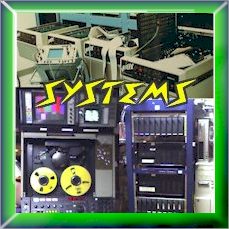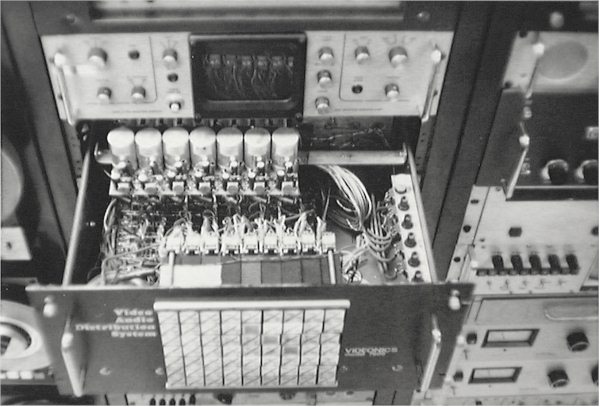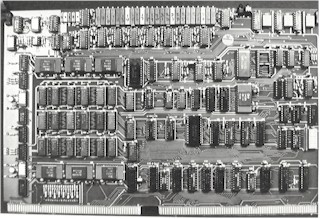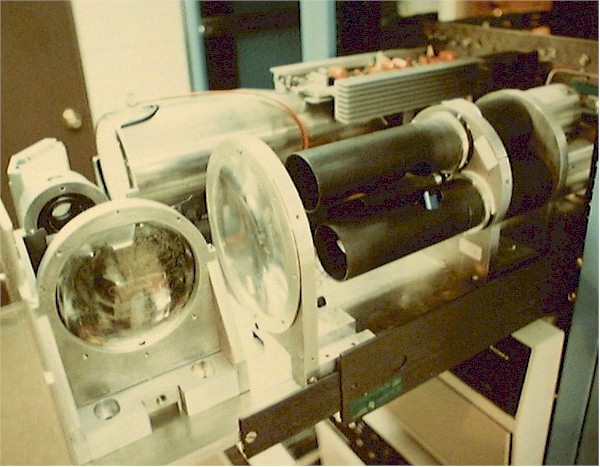
|
I've built a lot of systems of various sizes and shapes. I've also gotten way down deep into some pretty complex systems I've had to repair or maintain. I thought this would be a good place to show some of them. I'll try to clearly differentiate between those I've designed and built and those I have simply integrated from subsystem components, and those I've merely repaired or maintained. I define a system as a complex combination of hardware and software dedicated to solving a particular task. |
The first moderately large system I built was this video/audio routing switcher for the University of Mississippi's Media Center in the mid 1970's.
 The system was a 7 x 9 matrix (an odd number, owing to the availability of a 7 x 9 matrix of surplus lit buttons obtained from NASA.) Oddly enough, I made up the name "Videonics" on a whim. Today, there actually IS a company named Videonics that makes professional video equipment, but there is no relation.
By now you've probably seen a reference in some of these pages to the only remaining Scanimate analog animation computer, which I have the dubious honor of owning. Only eight Scanimates were ever produced by Computer Image of Denver, CO. I maintained two of these at Image West in Hollywood.
Probably the most complex system I ever designed and built was the VersEFX system at Image West. One of the biggest problems with the Scanimate was that due to its analog nature, and the fact that it was programmed with a zillion knobs and patch-cords, it was impossible to repeat something you had just done the day before.
|

 But Scanimate's ability to do effects in real-time was what made it commercially viable. Digital computers were catching up but still unable to match the speed of analog systems. VersEFx was an attempt to use digital computers to manage all the analog interconnections and functions with digital computers, while still keeping the image processing in the analog domain.
But Scanimate's ability to do effects in real-time was what made it commercially viable. Digital computers were catching up but still unable to match the speed of analog systems. VersEFx was an attempt to use digital computers to manage all the analog interconnections and functions with digital computers, while still keeping the image processing in the analog domain.



